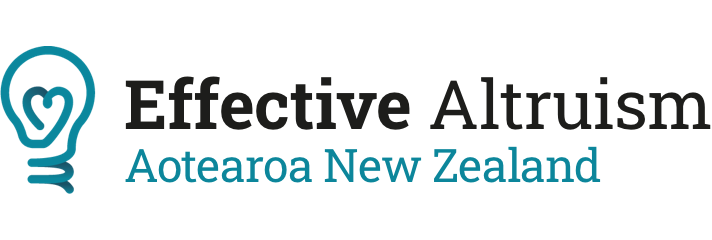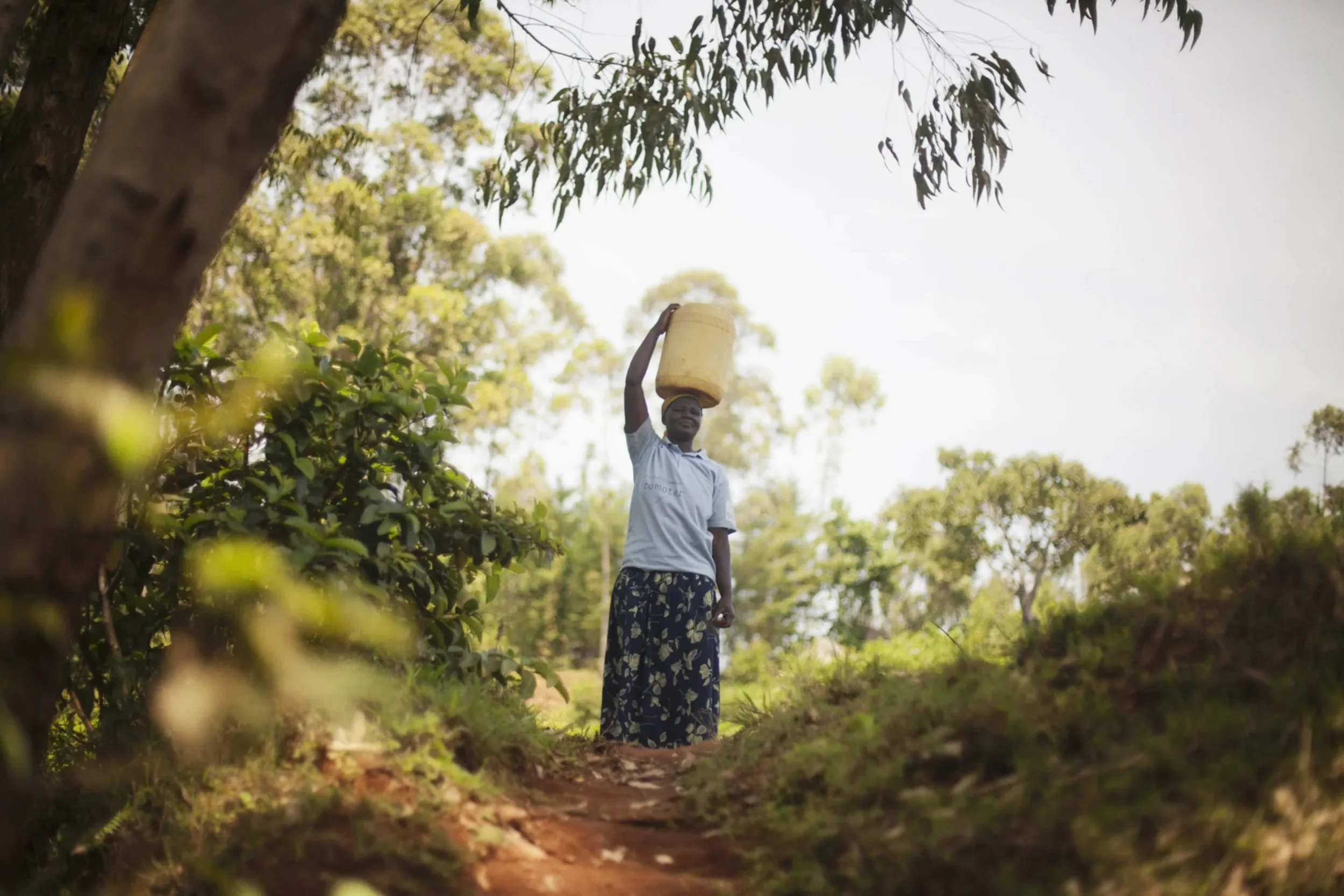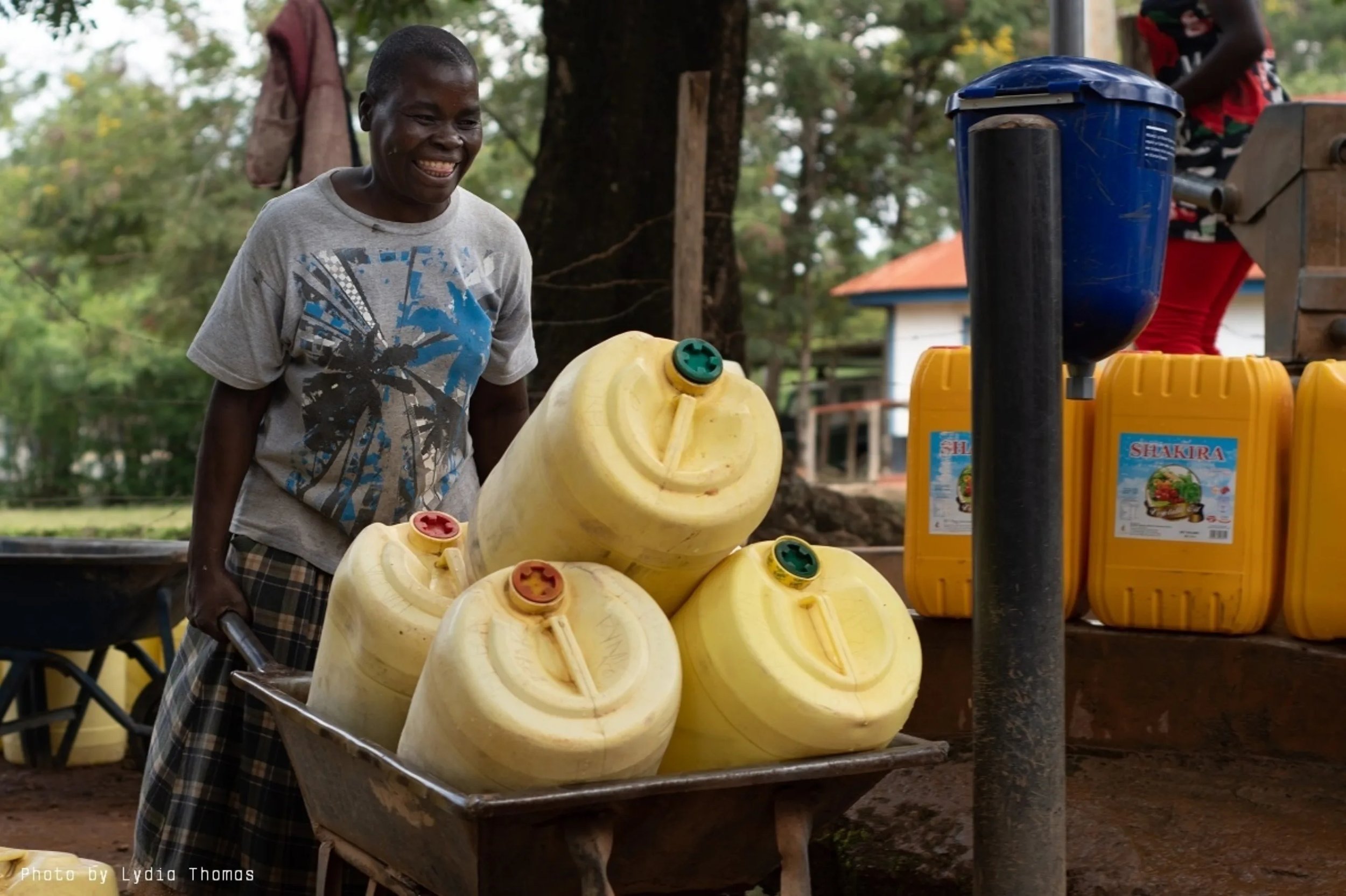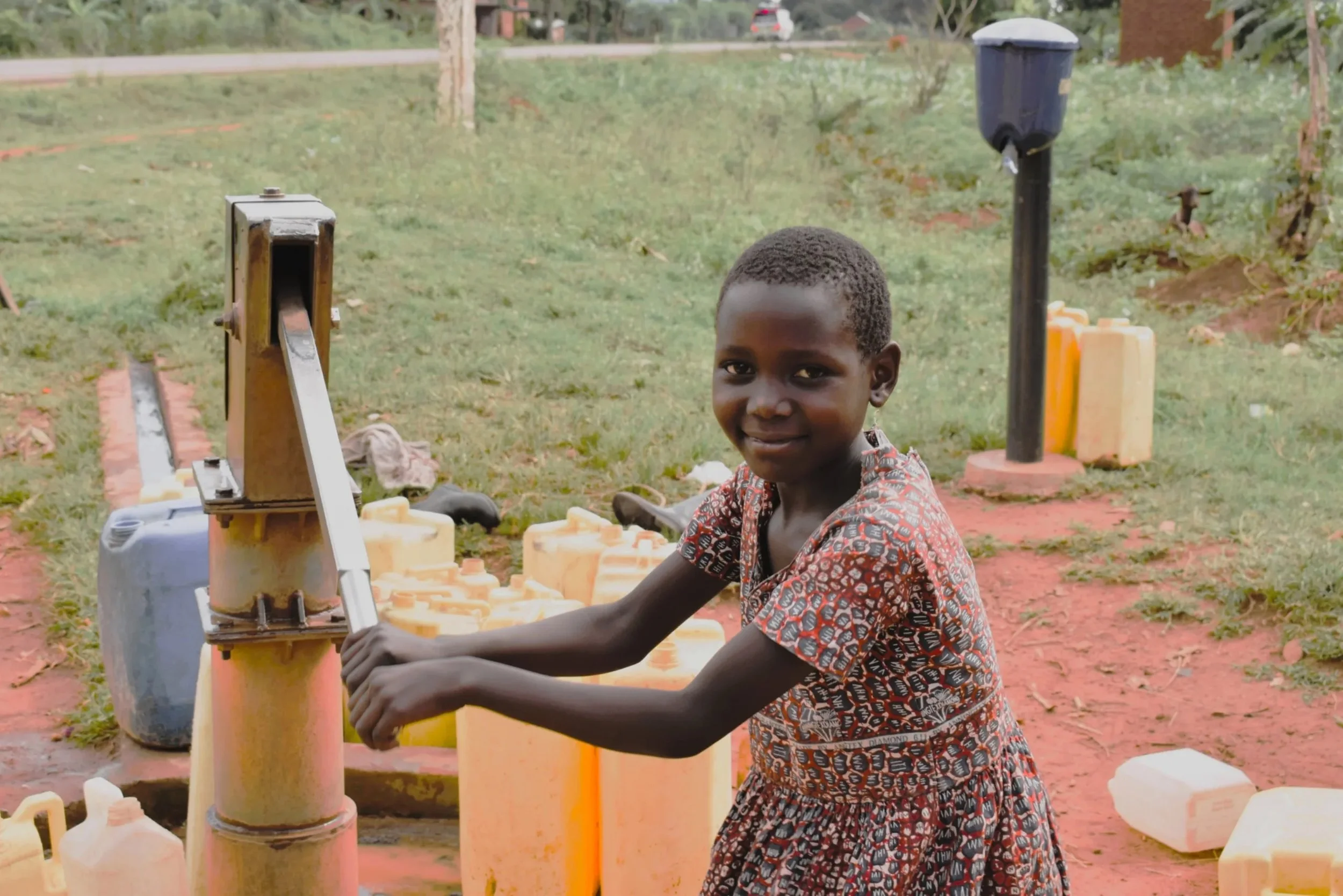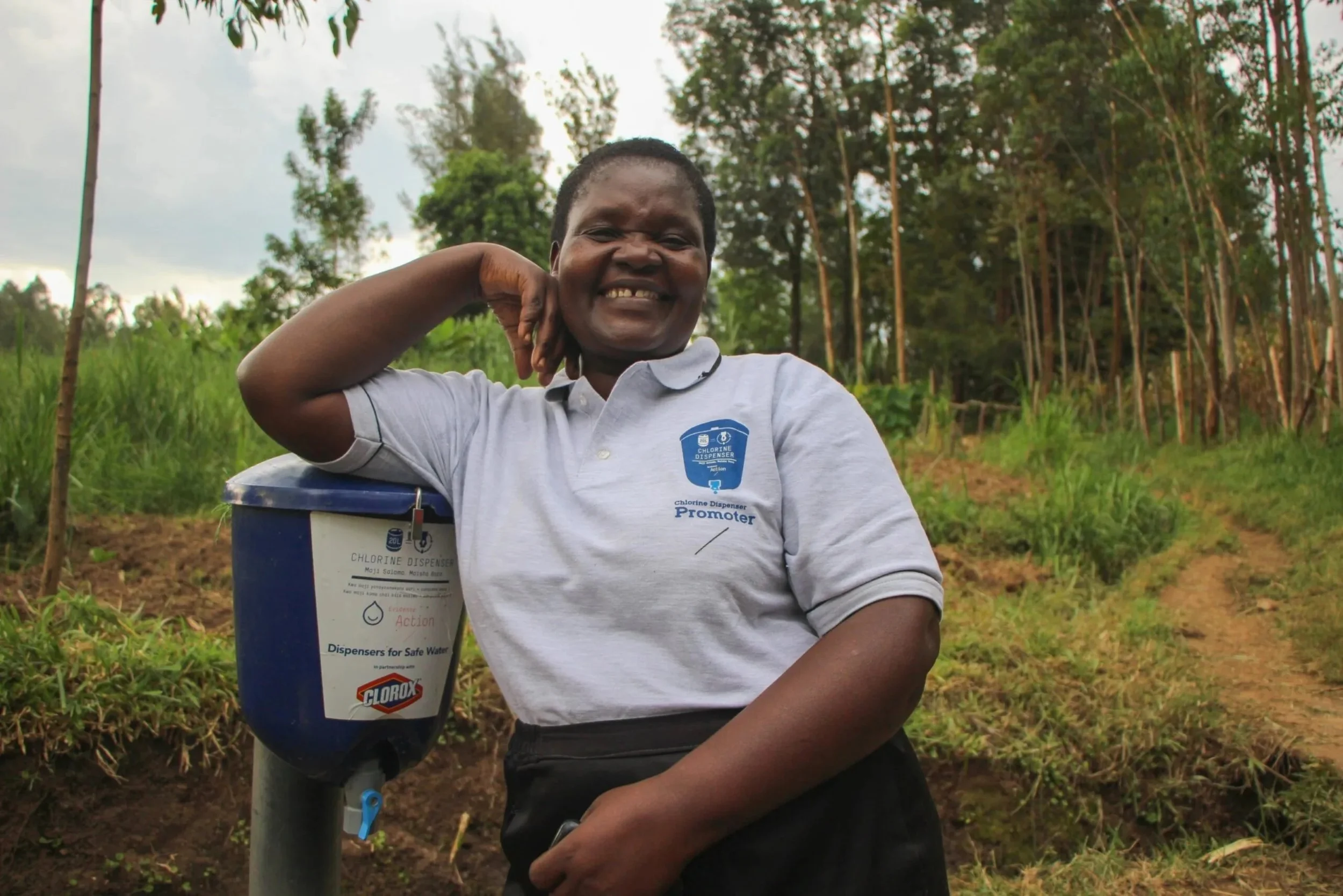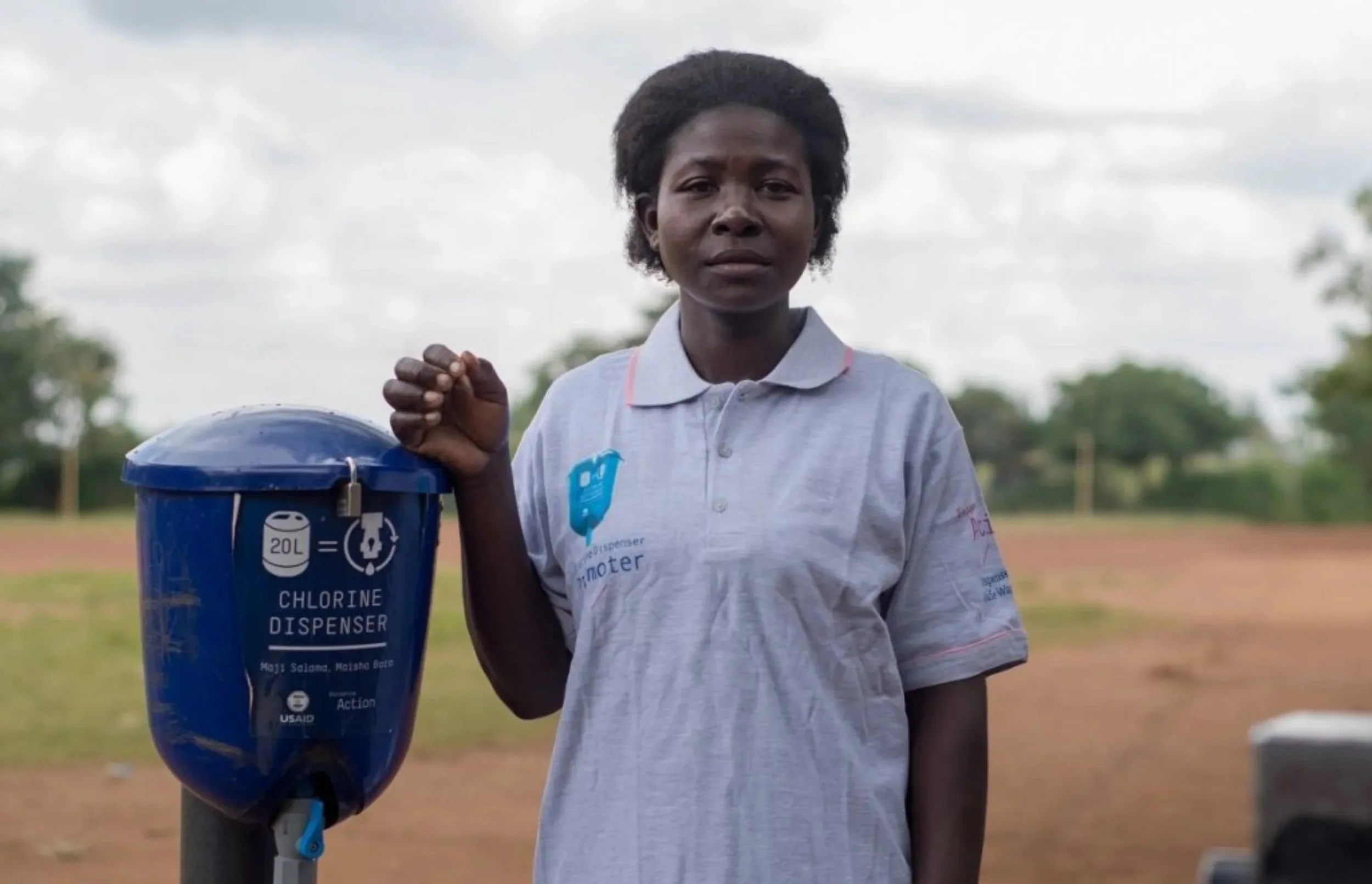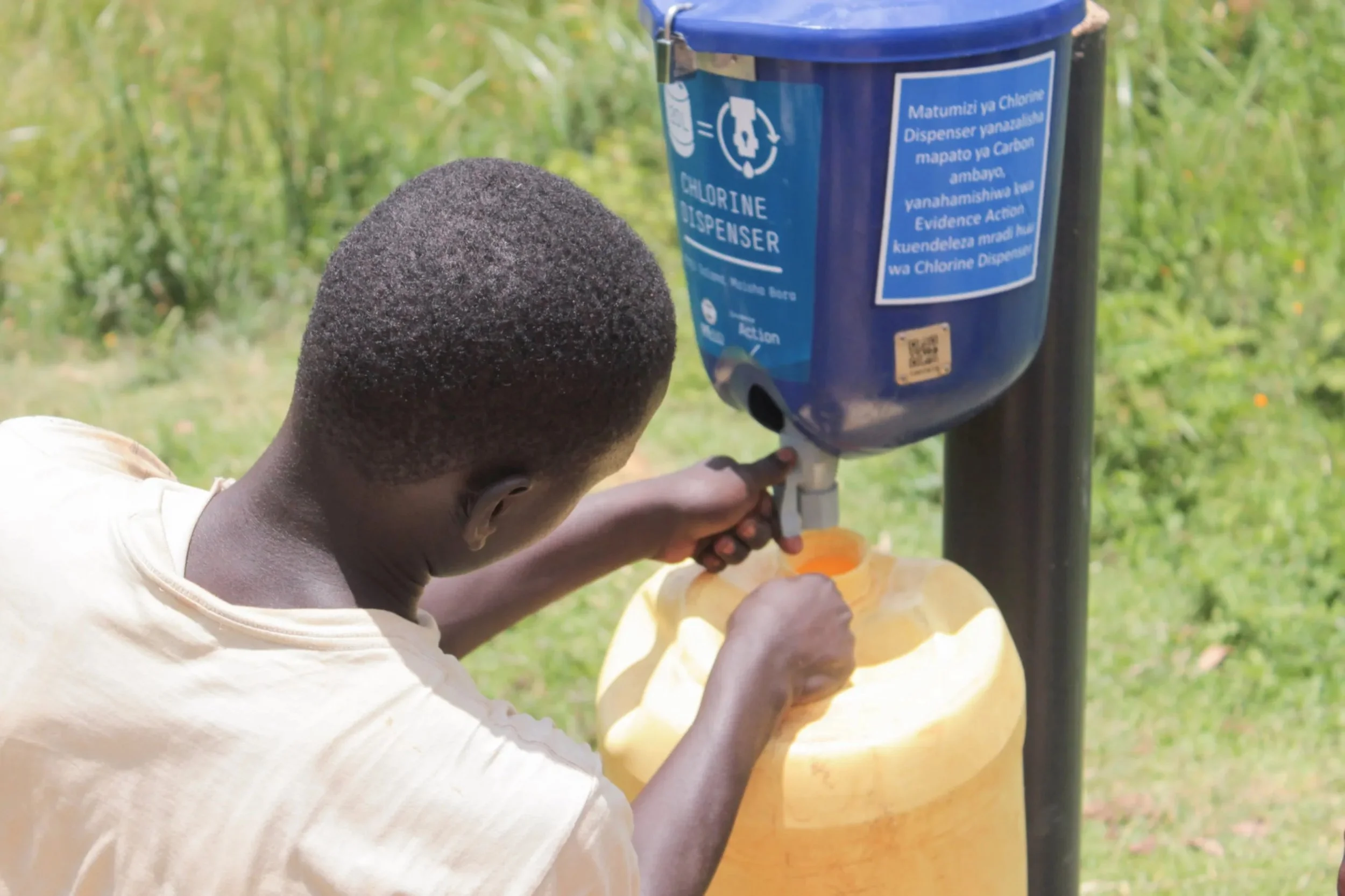
Charities > Global Health > Dispensers
Unsafe water causes more than 1.2 million deaths every year, and is responsible for around 6% of deaths in low-income countries
It’s also a leading risk factor for infectious diseases, exacerbates malnutrition, and is the most common cause of diarrhoea— which is, in turn, the world’s second-leading cause of child mortality. The problem is particularly acute in poor rural areas, where a lack of infrastructure leaves people to rely on open springs and shallow wells that are easily contaminated by human and animal waste.
But it doesn’t have to be this way.
For less than $1.50 per person, per year, Evidence Action provide 10 million people with free and reliable access to safe water.
Their uniquely-engineered chlorine dispensers are installed next to commonly-used water sources, enabling people to treat their water using a safe and pre-measured dose of chlorine. The chlorine stays active for 2-3 days, ensuring water doesn’t get recontaminated even when stored at home.
Across rural Kenya, Uganda, and Malawi, Evidence Action consistently provide water treatment in areas that aren’t reached by municipal systems , at no cost to users or their communities. By leveraging human-centric design, behavioural economics, community partnerships and an efficient last-mile network, they manage a network of over 53,000 chlorine dispensers— providing over 10 million people with access to safe water. Alongside the dispenser network, Evidence Action is now also scaling up an intervention called in-line chlorination to treat water in peri-urban areas with piped water systems.
Dispensers for Safe Water was a GiveWell standout charity, when GiveWell still recommended standout charities. For more information about their impact, visit Evidence Action’s website, or read GiveWell’s report on their work.
As recommended by
Learn more about the impact of clean water
Evidence Action's Dispensers for Safe Water programme provides safe water access to more than 10 million people in rural Africa. In this video, community member Mama Rosalia Lipesa reflects on how chlorine dispensers have impacted her village in Kenya.
Latest updates from Evidence Action
